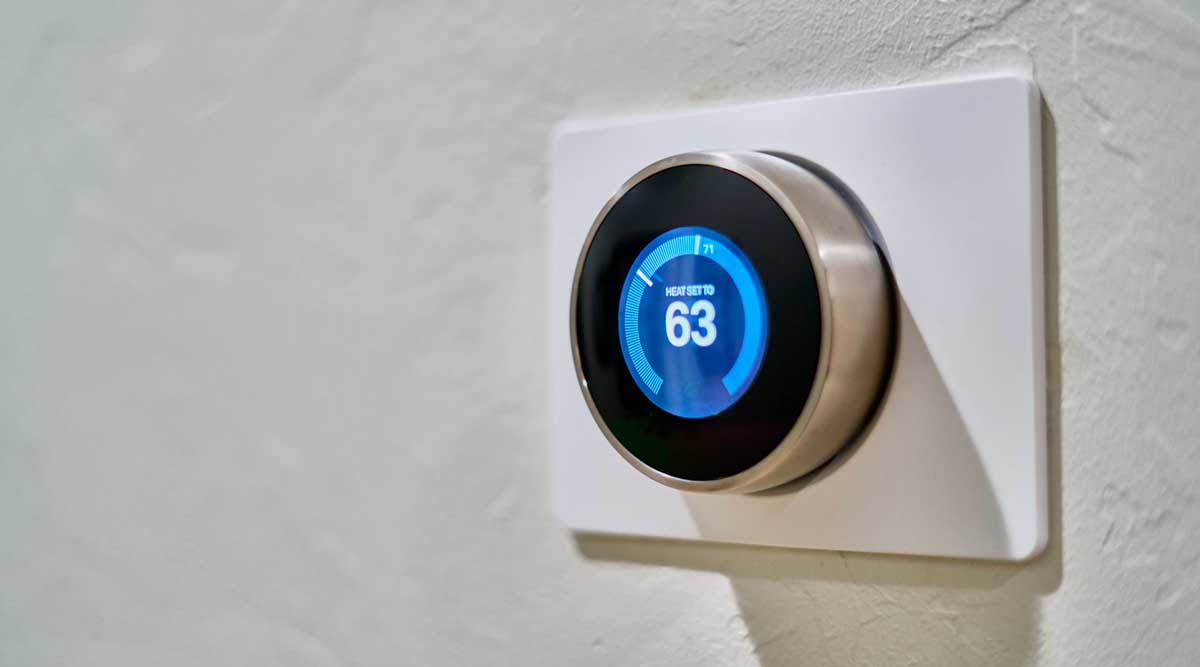A traditional thermostat can create a comfortable indoor climate. You just have to set it to the optimal temperature you want and enjoy a pleasant environment in your home.
However, it would be even more interesting to remotely control your heating system (switch it on as soon as you leave work, for example) and check the level of your energy consumption in real-time.
All this is now possible thanks to smart thermostats. This device collects and processes data related to heating and gives you online access to it at all times. Practical, isn’t it?
As Genadi Kahanovich, owner of Smile HVAC Service, said: “Whatever your decision is, always take the time to adjust your thermostat optimally. You will thus ensure greater thermal comfort in your home and will save more money in the long run.”
The main differences between a smart thermostat and a traditional thermostat
The main difference between conventional, mechanical or digital thermostats and a smart thermostat, is the fact that the latter makes decisions based on your behaviour. The smart thermostat recognizes trends in your consumption. It records and memorizes the time required to heat or cool the rooms and automate its work to maintain a constant temperature.
Another difference is that an application on your smartphone controls your thermostat remotely. Each smart thermostat goes hand in hand with a user-friendly smartphone app with which you can manage your heating remotely.
The thermostat programming is automated, but you can activate or deactivate the heating at any time with a few simple steps. In this way, you can adapt your consumption according to your rhythm.
Is a smart thermostat a good option for you?
A smart thermostat is practical, of course, but not everyone has the same needs. To find out if this type of thermostat is beneficial for you, analyze how you use your current thermostat. Do you already set your thermostat with high precision and only heat your home when you need it? In this case, a smart thermostat will be very unprofitable for you due to the relatively high price and installation costs.
On the other hand, if you want your home to always have an optimal temperature, depending on the season, and if you would like to track your energy-related expenses, definitely invest in a smart device.
Advantages of a Smart Thermostat

1. Zone control: room heating
A smart thermostat allows you to set the temperature of rooms and separate areas, which helps to lower your energy consumption. In particular, a bedroom requires less heating than a living room. However, you will need smart thermostatic valves for an integrated thermometer to heat per room. That will cost you around $60-80 per valve.
2. Modular heating
A conventional thermostat allows you to turn your furnace on and off to ensure a constant temperature in the house. A smart thermostat is more efficient and operates your furnace in different modes to avoid temperature variations. Not all furnaces allow modular heating, contact a professional for more information. In some cases, modular heating breaks due to work on the limit of the capacity. So you may need to repair the furnace before you can start using modular heating features.
3. Automation based on your location
Some smart thermostats have a presence detector which automatically reduces the heating when they don’t detect any moves in the house during a given period. They even manage to distinguish a person from an animal.
Other thermostats can be connected to geo-location apps to install on smartphones of your family members. The heating automatically increases when someone is at or near home, and vice versa.
4. The price and installation of a smart thermostat
A smart thermostat is a good investment. A new appliance will cost you between $180 and $300 (more than double a conventional thermostat), but you will quickly save 10% to 25% on your consumption.
However, hiring a licensed technician is worth it. The installer will provide you with all the necessary information on how it works and how to use the app.
5. Anyone with central heating can install a smart thermostat
However, underfloor heating works on the principle of low-temperature heating. The water supply temperature is much lower than for traditional central heating. Therefore, it constitutes a very energy-efficient heating method.
Smart thermostats directly connect to a smartphone, but they can also be adjusted online and of course, directly on the control panel. It means that, whether you are at work, on vacation, or watching Netflix, you can always set the smart thermostat in your home.
6. Smart thermostats adjust to your habits
Most smart thermostats adapt and learn your habits behaviour patterns. For example, if you want to heat the bedroom before sleeping every day, the thermostat will recognize this habit and set up personalized automation for this time slot.
7. See the energy consumption of your house in real-time
It can be very useful if you are trying to adjust the climate budget of your home. For example, if you notice that you’ve already spent the equivalent of $ 120 on heating in one week, you can control your spending and put on a sweater rather than turning up the heat even more. Heat a second home. For example, you can program a smart thermostat to heat your vacation home before you arrive and not worry about turning it off when you’re fixing it. The thermostat will take care of it for you.
Tracking your energy consumption has never been easier than with a smart thermostat. In the associated app, you will find clear statistics by the hour, by day, by month, or by year. You’ll know right away how much gas, electricity, and money you spend on heating and get an indication of the savings compared to a regular thermostat.
The cons of Smart HVAC systems:
1. The biggest one is the cost.
Smart thermostats can be worth at least four times the cost of conventional thermostats. Many families cannot afford such an investment. Moreover, it can be hard to install a smart thermostat without the help of a professional HVAC technician.
2.Complicated to use.

Getting started with smart thermostats can be confusing, for non-tech-savvy people, young children and the elderly. Smart thermostats also require you to think about when to use them: you can’t save energy if you forget to control them when you go out.
3.Potential privacy issues
With a smart thermostat, you need to share your data with the manufacturer. They know when you enter your house or leave it, for example, and not everyone is going to be comfortable with sharing this kind of data. Furthermore, there is always a risk to be hacked, even if it is rare. Someone could take control of your smart thermostat, without you noticing it.
4. Return on investment is substantial but takes a long time
Last but not least, don’t take the manufacturer’s energy savings figures at face value. You’ll probably save less energy and therefore less money than initially advertised. The return on investment may sometimes be long overdue.

